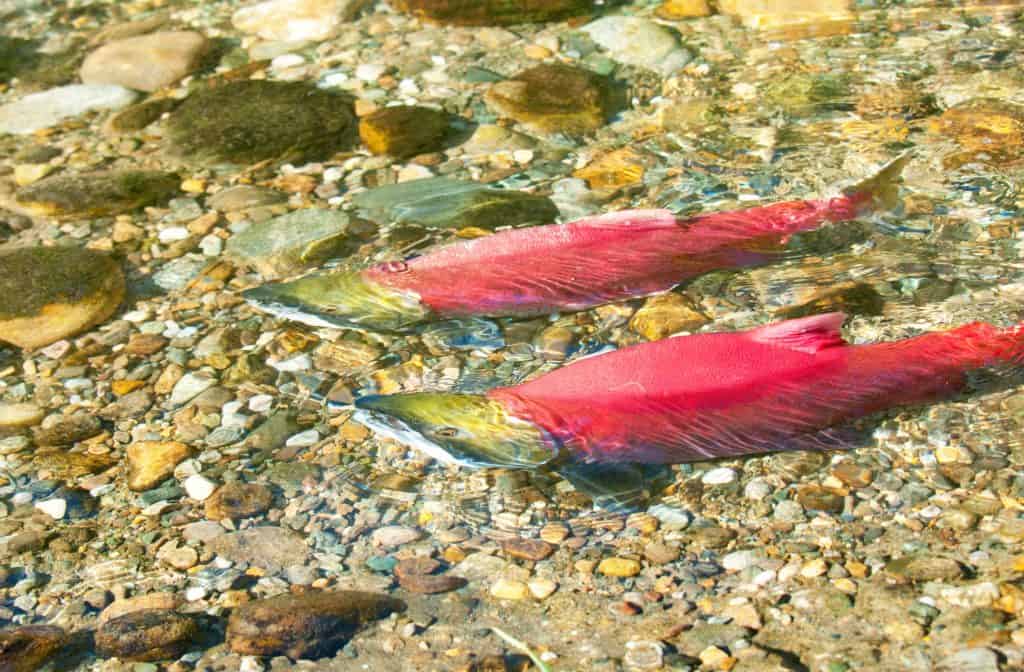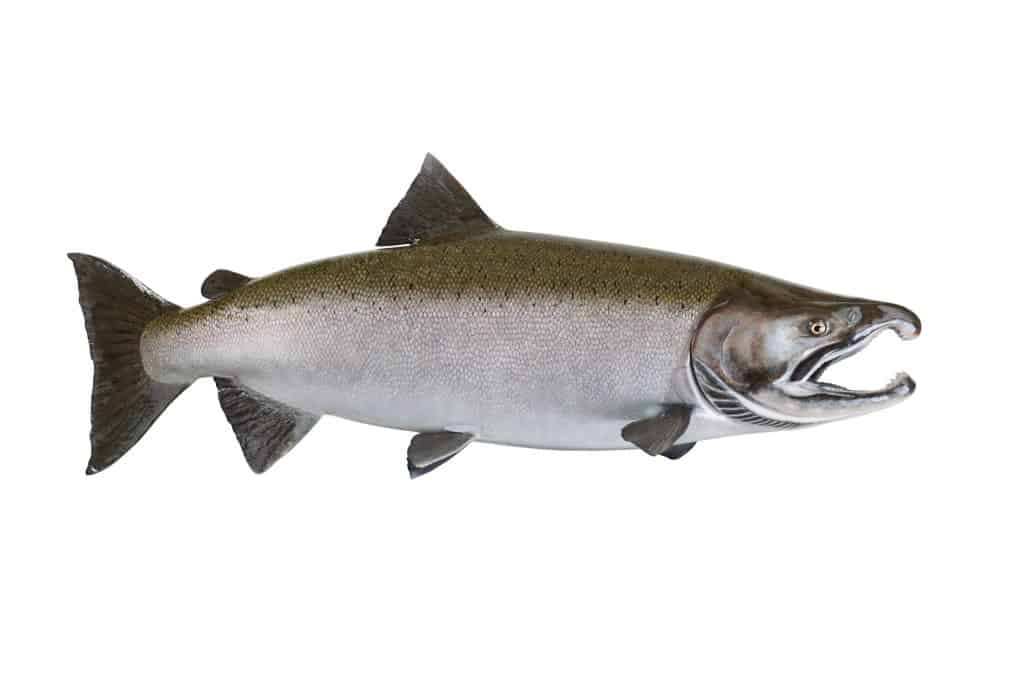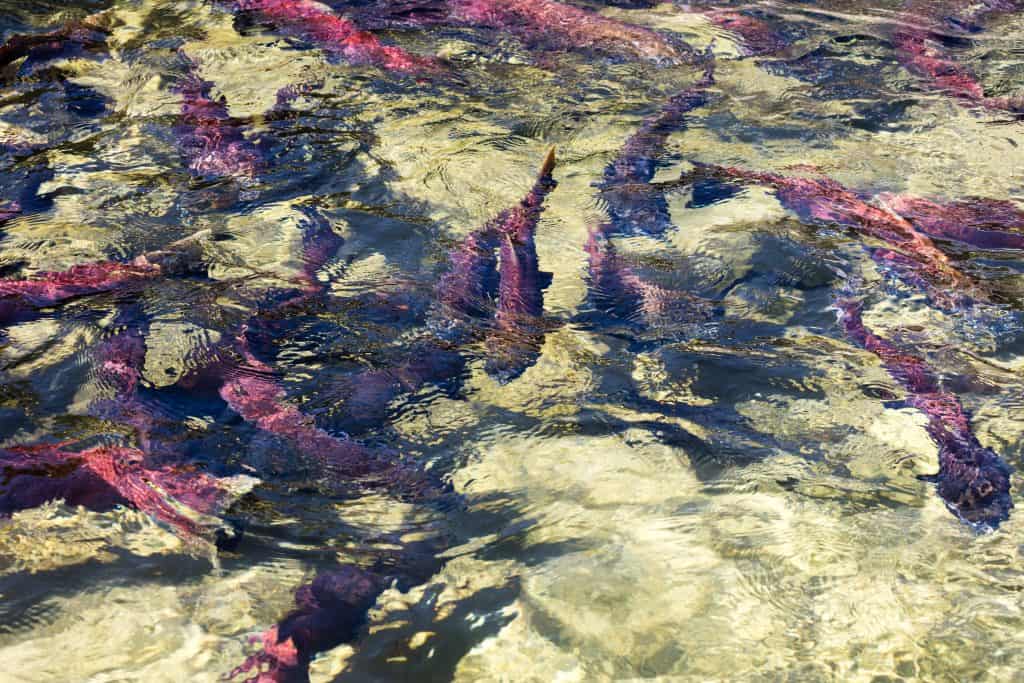
Kokanee Salmon are one of the most targeted fish in the USA. They are delicious and are fun to catch. They come in decent sizes and don’t require too much to target. Sockeye Salmon are a larger type of fish that spends a lot of their time in the ocean.
So, what is the difference between Kokanee Salmon and Sockeye Salmon?Kokanee Salmon are really just landlocked Sockeye Salmon. They spend the entirety of their lives in a lake or a river connected to a lake. Because they live in freshwater lakes, they tend to be smaller in weight and length in relation to sockeye salmons. They also cannot produce offspring together.
Sockeye Salmon spend most of their lives in the ocean, but they still have a need for freshwater streams, rivers, and lakes. Kokanee
Biology
All around, Sockeye and Kokanee have a
The only difference physically is their size. Kokanee Salmon are very much smaller than Sockeye, which can make them harder to distinguish. Usually, a small Sockeye is just called a Kokanee, and it’s pretty accurate.
The two types of salmon start out with a silver coloring that is very appealing to a lot of piscivorous fish, such as Steelhead Rainbow Trout and some largemouth bass.

When the Salmon start to spawn, their coloring goes from being the silver to a deep, bright red. This is because their bodies stop growing and making more tissues, and start to decay. The red is a result of the decay and death of their bodies.
Their tales are heavily notched and do not have any black markings on the dorsal fin, unlike most other fish in their family.
The biggest difference that the Kokanee have when compared to the Sockeye Salmons is their mouths.
They look exactly the same, but the mouths of the Kokanee Salmons are very soft and do not do well with a hook and a lot of tension behind it. When trying to catch a Kokanee Salmon, be sure to set the hook correctly, but not yank it out of the fish’s mouth.
Life Cycle
The reason that Sockeye and Kokanee don’t interbreed is that they spawn during different time periods. The Sockeye are in the ocean when Kokanee are spawning, and the Kokanee are more dormant during the time that Sockeye come in from the oceans to spawn.
Sockeye
After any time from 1 – 5 years, the Sockeye Salmons will return from the ocean and spawn. After they spawn they will die and the process restarts all over again with a new generation.
The first two or so years of the fish’s life will probably be the easiest part. Lakes are relatively safe and they can get big enough to make the journey to the ocean pretty quickly. Once they get to a certain size, however, their habitat will not be able to support them and they leave.
The Sockeye spend anywhere from 1 – 5 years out at sea due to the amount of food in the ocean. If there is a lot, then they will stay and feed. If the ocean was struggling that year, they will return to the river and die there.
Kokanee Salmon are born in some of those same lakes and streams and spend the rest of their lives in those lakes. The Kokanee get as large as the habitat will allow them to get and wait until they get caught by a human until a different fish kills them, or until they go spawn somewhere after a few years and die there.
Kokanee and Sockeye Salmons are also very big energy conservationists. If there is no
Diet
The Kokanee Salmon and Sockeye species are plankton eaters but are also known to sometimes eat shrimp and insects during the juvenile parts of life.
The ocean has pretty good constant oxygenation, which helps keep plankton alive year round. During the winter months of the year, however, the lakes freeze over, putting a cap over the water that stops the oxygen in the air getting to the water. Because the plankton
The lack of sunlight can also hurt the oxygen levels. If not enough light is getting down to the plants on the bottom of the lake, then the plants down there will die, stopping yet another way of getting oxygen into the water.
If this happens too early in the season, the Kokanee can lose their most precious food supply and start to die. If it gets especially bad, or they’re being forced to move a lot, then the Kokanee cannot get enough oxygen and die of that…
But every year, when the plankton population returns to full force, the Kokanee Salmon come back strong as ever. Kokes are a hardy species.
Range and Habitat
The range that a Sockeye Salmon lives in is pretty large. The main center of their habitat is the British Columbian coast and the Washington Coast. They span south as far as California’s Mendocino County Coast, about mid-north California.
Sockeye Salmon have been seen as far north as the Canadian Arctic, or Northern Canada. Some have even been seen as far east as the Anadyr River in Siberia. Sockeye Salmon have gone inland as far as mid-Idaho, but these are usually Kokanee Salmon and landlocked.
Kokanee Salmon have been introduced to nearly every continent on the planet, and have been able to thrive nearly everywhere. In the USA, they can be found in every state to the West, though some states only have a few lakes where a Kokanee Fishery was established.
For the Eastern States, North Carolina’s Nantahala Lake is the only place where Kokanee Salmon exist. This population was established for the sole purpose of being forage food for some of the other types of fish in the lake.
Endangered Status
Sockeye Salmon are listed on the endangered species list. Because one species of fish can be so spread out across the world, the fish are separated into specific populations to be categorized on the endangered list.
The population found in the Snake River are endangered, while the population in some lakes are listed as stable. Overall, the species is not in danger of being extinct.
Kokanee Salmon, on the other hand, are very stable and are listed as “Least Concern possible” on the list. Kokanee Salmon are able to survive a lot of hardships which has allowed them to be introduced to nearly every environment.
There are no populations in the USA that need to be concerned about. In most places, the bag limit for Kokanee Salmon is around 15 per person.
Kokanee and Sockeye
There aren’t a lot of differences between the two fish. The location that they are found and the size they will grow up to be are the two biggest differences. Their diets, life cycles, and the best ways that they are caught are all very similar, if not identical.
As a general rule of thumb when talking about the two types, a Sockeye or Kokanee Salmon caught in a lake is a Kokanee.

Related Questions:
Do Kokanee and Sockeye Salmon taste the same? There is a
What is the healthiest salmon to eat? Wild Alaskan Salmon is the healthiest fish to eat. Kokanee Salmon and Sockeye Salmon rank lower on the list than Wild Alaskan Salmon but are still very healthy fish to eat. The fresher you can get the fish, the healthier the fish will be.
